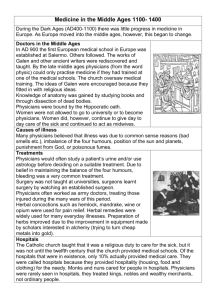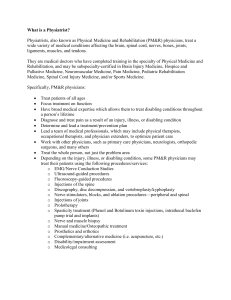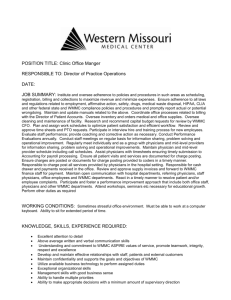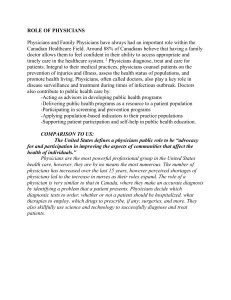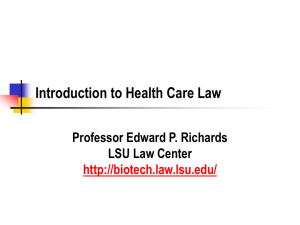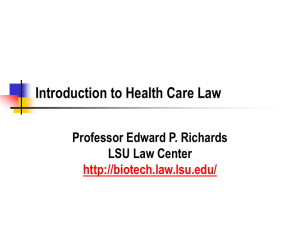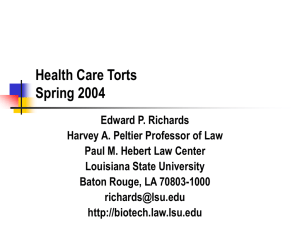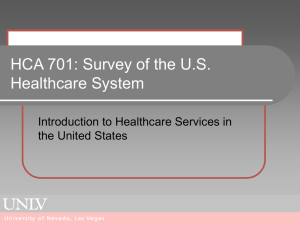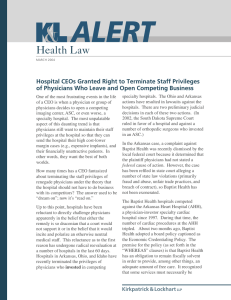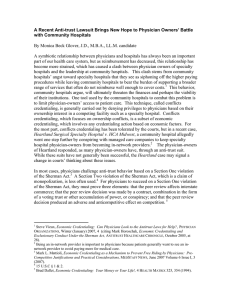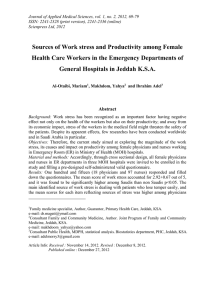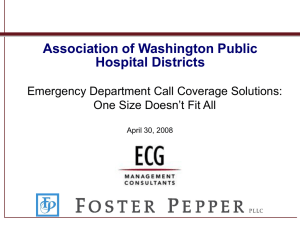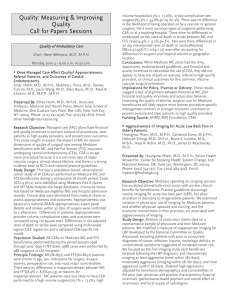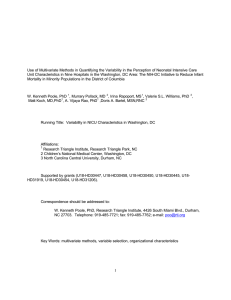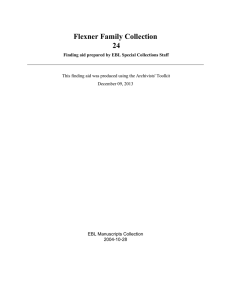History of Health Care in the United States
advertisement
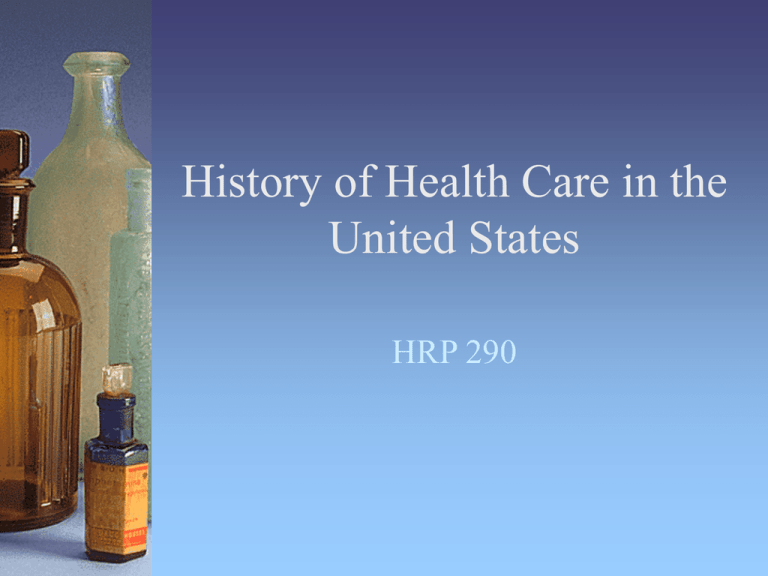
History of Health Care in the United States HRP 290 The Beginning • Hippocrates – 460 B.C. – Beginning of medicine as we know it – Systematic observations not superstition – Ethical principle which form our current ethical guidelines Hippocratic Oath • I will apply dietetic measure for the benefit of the sick according to my ability and judgment; I will keep them from harm and injustice. I will neither give a deadly drug to anybody if asked for it, nor will I make a suggestion to this effect. Similarly I will not give a woman an abortive remedy. In purity and in holiness I will guard my life and my art. • I will not use the knife, not even on sufferers from stone, but will withdraw in favor of such men as are engaged in this work. European • Invention of microscope-van Leeuwenhoek (1670s) • Pasteur (1860s) • Semmelweis (1840s) – hand washing • Lister (1860s) –antiseptics • Koch (1870s) – microbe with disease • Fleming (1920s) – penicillin AMERICAN EARLY SETTLERS • • • • No Formally trained physicans/nurses Treatments word of mouth “old wives tales” Used herbs and home made concoctions Women cared for house, children and those that were ill First Physicians in America • English system-physicians, apothecary and chirurgeon • Few university educated physicians came to the new world • “A few physicians among us are eminent for their skill. Quacks abound like locusts in Egypt, and too many have been recommended to full practice and profitable subsistence” Smith, 1758, History of New York First Medical Training • 1756 College of Philadelphia (Univ. of Penn) • 1768 King’s College (Columbia) • Most trained in an apprenticeship process • Process unregulated and unstructured American Medical Association • Founded in 1847 • Goal to improve medical education • Common goal difficult; Not see need to change (note that Pasteur, Koch and Lister had not made impact) • Abraham Flexner headed a study of medical education (The Flexner Study) Medical Practice • Medicine was not a field that provided wealth or prestige • Many had to have second jobs • Physicians had no need for hospitals • Patients treated at home and care for by families or hired help Hospitals • Very few hospitals; physician had little need; more affluent stayed at home • Three kinds – Pest houses – Almshouses – Marine Hospital– Seamen’ Act • Seen as a place to go to die! • Changed in 1900’s with improved sanitation, decrease in hospital acquire infection and antiseptics introduction Chester County Hospital 1924 www.cchosp.com/images/history/history_ben_03.jpg St Vincent Depaul Norfolk, VA/Catholic Daughters of CharityNSU Historical Archives Norfolk State University Archives 1888 Women’s Christian Association/ 1898 Norfolk Protestant Hospital From: Words of honor : the story of Sentara Norfolk General Hospital's 100year long commitment to excellence by Highton, M. (1988) Nurses • Not a “suitable profession” is 18th and 19th century • Most healthcare provided by Catholic Nuns • Florence Nightingale 1850’s – Leave your shackles and become a nurse – Reformed the health care of soldiers during the Crimean War http://www.florence-nightingale.co.uk/flo2.htm Health Insurance • No such thing as health insurance existed • Until----- “Birth of the Blues” • 1929 Baylor Hospital – 50 cents a month – 21 days of hospital care at Baylor Hospital • Beginning of employer provided health insurance Effect of World War II • • • • New technology New professions Advanced Education Suburbanization – Hill Burton Construction Act • Changes is social norms • Birth of “Baby Boomers” Circa 1944 National Library of Medicine Those without Health Care • President Lyndon Baines Johnson 1963-1969 • Great Society • 1965/1966 Medicare and Medicaid – care paid for by the federal government http://www.whitehouse.gov/history/presidents/lj36.html Fast Forward To 1980s • Federal Government saw rapidly rising cost and anticipated even larger increase • Why? – Technology – Population Growth – Inflation • Payment systems – Retrospective – Prospective Prospective Payment System • DRGs (Diagnostic Related Groups) • Health Maintenance Organizations (HMO) – Primary Care Physician/Gatekeepers – Control cost by controlling referrals, drugs, and hospitalizations – Negotiated contractual agreements between the physicians and insurance company Stakeholders in Health Care Employers Low cost/good care Profit/Good Care Insurance Co. Patient/Employees Low cost/good care Health Care Providers Good Reimbursement/ Quality Care Health Care System (?) • Massive– as of 2005 Census – 2.4 million nurses • Projected to grow by 623,000 by 2012 – – – – – – 7,569 hospitals that employ 5.1 mil people 819,000 Physicians 77,000 Occupational Therapists 182,00 Physical Therapists 94,000 Respiratory Therapists 18,000 Nursing Homes with 1.6 residents • State with largest Number? • Potential for growth? National Health Care System • First proposed in 1940s • Reintroduced in 1993-2000 Clinton presidency • United States is the only developed country without a national health care plan! – Why??? Other Considerations • Portability – HIPAA – Cobra – Continuity of Care • • • • Pre-existing conditions More cost being passed on to employee Cost is the same regardless of salary Rationing of Health Care – Based on ability to pay – Based on health history – Based on lifestyle
